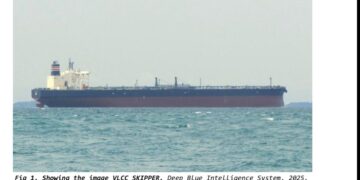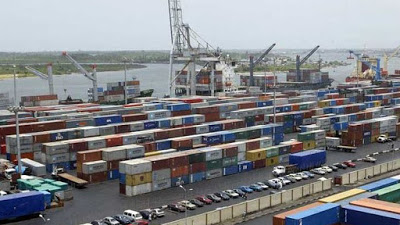Terminal operators are doing well to keep trade flowing in spite of the very many challenges in the environment, particularly that of the gridlock that seem to have defied several solutions.
However, in spite of the network of efforts through the ease-of doing business in the port, cargo dwell times remain high in the busy Lagos ports; Apapa and Tin-Can Island.
The dwell time is the period of time (typically days) that it takes for imports at the terminal gates to be loaded onto a ship or the time it takes for imports to be released and loaded onto a truck or a train.
Therefore, shorter dwell time of cargoes helps to ease terminal congestion, while it also helps cargo owners to save on storage charges applied by the terminal operators.
But, speaking on some of the causes of rising cargo dwell time, spokesman of the Seaport Terminal Operators Association of Nigeria (STOAN), Dr. Bolaji Akinola, blamed the rise on a number of reasons and chiefly manual examination process by the Nigeria Customs Service.
He said that as it is known, no container can be released from the terminal to exit the port until they get the necessary clearance of the customs.
“The terminal operators have been ensuring that trade flows, at least within the terminals.
“The only snag we have in the port is the cargo dwell time; it is still unnecessarily high, and that is because of the manual checks that the Nigeria Customs subject cargoes to at the ports.
“Of course, you cannot release any cargo until Customs authorizes the release. And Customs would not authorize the release until they do the physical examination.”
Responding to outcry of shippers and licensed agents on the issue of delays resulting from physical examination, the customs service sometime in 2020 in the heat of the Covid19 pandemic, said at a stakeholders’ virtual dialogue that it was planning on deploying endoscopic cameras for cargo examination at the nation’s ports, to ensure prompt cargo clearing operations.
Nonetheless, the customs service had insisted on 100 per cent physical examination of containers citing false declaration by some agents.
Stakeholders on their part have often wondered why the customs service would not consider scanning of containers, which is a non-invasive method of inspecting and verifying contents of a container by producing X-ray images of the contents.
With scanners, the customs personnel at the port could examine at last 50 containers daily compared to spending not less than five hours to physically examine just a container.
Speaking on other factors increasing cargo dwell time, the STOAN spokesman highlighted the need for repair of the roads leading to the ports, because the roads have become dilapidated.
He said: “We are aware that the NPA is working with the Lagos State Government to ensure the free flow of traffic on the ports corridor. But the repair of the roads is important, because the roads are also very bad.”
Dr. Akinola also bemoaned the devaluation of the Naira and the challenges it had posed to the terminal operators, saying: “When the port concession happened in 2006 the exchange rate was N120 to the USD.
“Also, our obligations to government are paid in USD, so now, by between 2006 and now, the Naira has lost more than 400 % of its value; from N120 to now about N500 to the USD. This is eroding the earnings of terminal operators.
“All others in the logistics chain have raised their charges to make up for their loses in the devaluation of the Naira; truckers have increased charges from what they used to like five years ago- they have increased three-fold.
“Clearing agents, freight forwarders have increased charges, even the Ports Authority has increased charges for marine services, Customs constantly review anytime there is depreciation of the Naira, the benchmark rate is reviewed upwards, but the earnings of terminal operators remain stagnant.”
He also said that many importers approach the cargo clearance process in a manner that caused undue delays; he said they would usually wait until the arrival of their containers before they begin the process of the clearance, thus taking longer days than 48 hours.
He said: “Many importers find it cheaper to use the port as storage facility, a situation where people import and they wait until the goods arrive before they start the process of clearing, it is going to prolong the cargo dwell time. That is what is happening, in addition to the physical examination.”
“In this situation, some importers even leave the cargoes in the terminal until they are ready to sell, because the storage charges are nothing compared to warehouse charges.”






























































